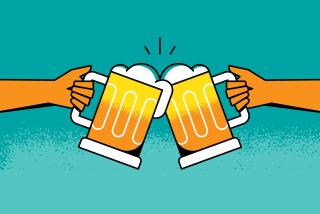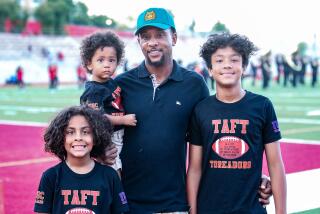ONCE UNITED, NOW DIVIDED
United they stood, two men with black-gloved fists thrust into the night.
In solidarity, they bowed their heads as the national anthem played.
Together, in harmonious synchronicity, they defied history.
On Oct. 16, 1968, Tommie Smith and John Carlos finished one-three in the 200-meter Olympic finals. Smith set a world record in 19.83 seconds, powering through the thin air of Mexico City and across the finish line, arms upraised, with a mark that endured for 11 years.
But it was their demonstration on the victory podium afterward, medals dangling around their necks, that resonates today. Their purpose was to draw attention to the plight of African Americans at the height of the civil rights movement. As Smith told ABC-TV announcer Howard Cosell in Mexico City, “My raised right hand stood for the power in black America. Carlos’ raised left hand stood for the unity of black America. Together they formed an arch of unity and power.”
The photograph of that moment forever couples the two men. About 40 years later, however, Smith prefers to stand separate from Carlos, and vice versa. Each has written an account of the podium moment that contradicts the other’s. Each has disparaged the other’s accomplishments, exchanging barbs that belie the dignified eloquence of their silent salute.
Smith describes their relationship as “strained and strange.” Carlos refers to his former teammate only as “Mister Smith.”
Those who know them can only watch, in exasperation, as their statements seemingly contradict the salute’s original meaning. Sociologist Harry Edwards, the two sprinters’ mentor at San Jose State University, compares their bickering to “two old men arguing in a bar an hour before closing time.”
“They’re almost like brothers,” says journalist Dave Zirin, author of the forthcoming “A People’s History of Sports in the United States.” “Small fights grow in stature over time and the feelings of aggrievement become so deep that no one can even remember what caused the wounds.”
------
To trace how the symbol of unity disintegrated to discord, it’s important to remember the context of Smith and Carlos’ protest. In 1968, the United States was verging on chaos. As the Vietnam War raged in Asia, the civil rights movement raged in America’s cities. Assassins’ bullets felled Martin Luther King Jr. and Robert F. Kennedy.
In this post-Jackie Robinson era, black athletes were increasingly vocal about problems they faced. A groundbreaking, five-part series in Sports Illustrated outlined myriad issues, including lack of minority coaches and athletic directors, discrimination at Southern colleges and racism in the locker room.
Edwards was among those who sought to reform racial inequality in sports. He created the Olympic Project for Human Rights, a group that initially sought to organize a boycott of the 1968 Olympics. Two of his students were Smith and Carlos, who raced for Spartans coach Bud Winter and his “Speed City” program.
Born a year and a day apart, Smith and Carlos “could not have been more different,” Edwards says. A child of Harlem, Carlos was “an extreme extrovert with a challenging personality,” according to Edwards. The son of sharecroppers, Smith was “a much softer, private person” who grew up in rural Texas and then in Lemoore in California’s Central Valley.
After Edwards’ boycott concept was rejected, the decision to make a statement was left to the individual athletes. African Americans dominated track and field events in Mexico City, winning 10 gold medals and setting seven world records. But only Smith and Carlos made a public protest.
The backlash was immediate. The International Olympic Committee pressured the U.S. Olympic Committee to banish Smith and Carlos. The Associated Press accused them of a “Nazi-like salute.” Brent Musburger, then a columnist with the Chicago American newspaper, called them “black-skinned storm-troopers.”
“It was a polarizing moment,” says University of Minnesota sociology professor Doug Hartmann, author of “Race, Culture and the Revolt of the Black Athlete: The 1968 Olympic Protests and Their Aftermath,” “because it was seen as an example of black power radicalism. Mainstream America hated what they did.”
Both men say that they received death threats. Smith’s attempts to play pro football, both in the NFL and the CFL, were short-lived. He eventually earned his master’s degree in sociology. After teaching and coaching at Oberlin College, he settled in Southern California and coached track at Santa Monica College.
Carlos blames the suicide of his first wife in part because of the post-Olympic pressures the couple faced. He also played pro football briefly; he hustled various jobs before finding work as an in-house counselor at Palm Springs High School.
“They were pioneers in getting politically involved,” says Olympic teammate Bob Beamon, “and they faced an incredible backlash that hurt them for many years.”
------
Only recently have their reputations undergone a revolution. No longer considered rebels without a cause, they were awarded honorary degrees at San Jose State. The school also erected a statue in their honor. Both are card-carrying members of the USA Track & Field Hall of Fame. In 1999, HBO Sports broadcast an acclaimed documentary entitled “Fists of Freedom.” (HBO plans to re-air the film tonight.)
And yet, despite the fact that both men lived in Southern California, neither visited the other. Smith was virtually silent about the incident until 1991, when he spoke to Sports Illustrated for the magazine’s “Black Athlete Revisited” retrospective.
What’s clear is that the two disagree about nearly every detail from Mexico City. Smith says that he suggested to Carlos that they raise their fists, noting that his first wife, Denise, had the gloves in Mexico City.
“I thought about wearing both gloves, but that wouldn’t be very sensible,” Smith says. “So then I told John what I was planning to do. I said, ‘You don’t have to do anything that I do, but this is what I’m going to do. Just follow my lead.’ ”
Carlos counters that it was his idea. “I told Tommie, ‘Listen, man, I feel like there needs to be some sort of statement made. I want to make a statement. What do you think?’ He said, ‘I’m with you.’ ”
Most controversially, Carlos says that he allowed Smith to beat him in the 200. “I let him win for the simple reason that Tommie Smith would have never put his fist in the sky had I won that race,” he says. “I slowed down -- just look at the tape. When I came off the turn, I pulled back. I turned around to Tommie to tell him: ‘C’mon and race if you want this medal.’ ”
Smith dismisses Carlos’ statement, saying that he turned on his “Tommie Jets” to power past Carlos. “He had beaten me in the Olympic trials [at the 200], and I think that he felt he was going to win the race in Mexico City,” Smith says. “By him saying he let me win, it completely destroyed the camaraderie of competition.”
Now 64 and recently retired from Santa Monica College, Smith published his autobiography, titled “Silent Gesture,” last year. Smith says that he wrote the book (with journalist David Steele) to correct misconceptions about Mexico City. “People ask me, why did you wait 40 years?” he says. “One is, I’m not a liar and so I had to tell the truth. No. 2, I had to wait for everybody else to tell their story about Tommie Smith before Tommie Smith told the truth.”
Now 63, Carlos calls the book “trash.”
Says Carlos: “The fact that he wrote that he gave me the glove and told me to just do what he did -- it’s absurd to make a statement like that. Anybody that’s ever known me knows I ain’t never been no follower. For him to say that was insulting to me.”
Carlos, who wrote a self-published autobiography in 2001, plans to write another with Zirin.
Those close to the two men suggest that financial considerations have hindered rapprochement. A lucrative film deal reportedly fell apart because terms couldn’t be resolved.
“If you were part of, arguably, the most famous image from the Olympics, something that’s been plastered on T-shirts and posters, and you never saw a dime from it, you might feel rankled,” Zirin says.
Beamon says that the two should settle their differences on the track. “I’d like to see them go back to Mexico City, get in the blocks and run the race again, winner take all,” he says.
Edwards believes that, eventually, the enmity will be forgotten.
“What matters is their courageousness,” he says. “One hundred years from now, what will matter was that their gesture became the iconic image of a phenomenal era, when people from Muhammad Ali to Curt Flood changed the face, the image and the dynamics of American sport.”
Perhaps Smith and Carlos will find a path to peace. After all, they agree on one fundamental point: Neither man regrets his action in ’68.
“I went up there as a dignified black man and said: ‘What’s going on is wrong,’ ” Carlos says. “I don’t have any misgivings about the negative things that came into my life because what I did was greater than any negativity that was sent to me.”
“It was a cry for freedom and for human rights,” Smith says. “We had to be seen because we couldn’t be heard.”
More to Read
Go beyond the scoreboard
Get the latest on L.A.'s teams in the daily Sports Report newsletter.
You may occasionally receive promotional content from the Los Angeles Times.






